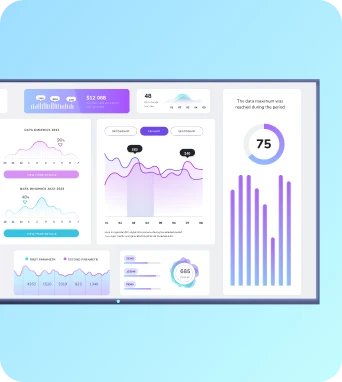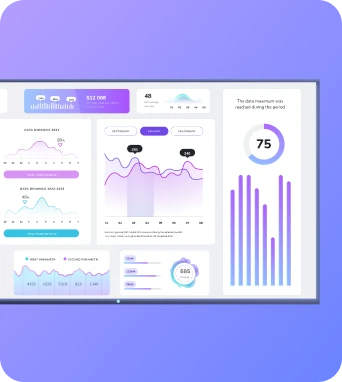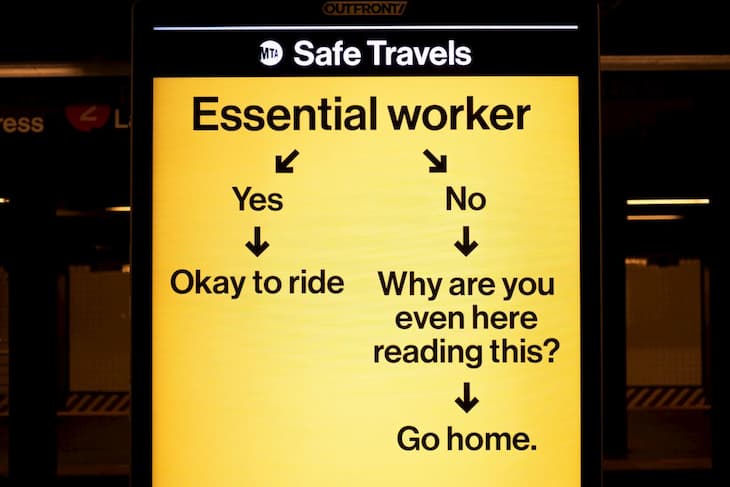Predicting the Future of Digital Signage
Peering into a crystal ball is always a bit hazy, isn’t it? When some of the digital signage industry’s biggest names and vendors did so back in January, to try to see what lay ahead for the future of digital signage and retail tech, a few familiar phrases emerged from the haze:
- “touch free experience”
- “facial recognition”
- “proximity sensors”
- “bridging the physical and online experience”
- “artificial intelligence”
- “IoT interaction.”
The deeper you looked into the crystal ball, the more exciting it seemed. Robot assistants. Stores that could display custom on-screen promotions based on your online shopping behavior. Smart mirror displays that use AI and gesture recognition to superimpose clothes onto your body for a virtual fitting room experience. Cashierless grocery stores where automated checkout lets you walk in, shop, and walk out without ever queuing up for a register.
If digital signage tech was already reinventing experiences in stores, schools, hospitals, and well, everywhere - we were poised to see just how far it could go towards doing that.
But then the world caught a virus. And suddenly, it got kind of hard to be excited about all that advancing technology. Not because it wasn’t exciting, but because its significance seemed dwarfed by world events.
Digital signage is essential during COVID pandemic
Ironically enough, it is precisely those world events that reinforced the significance of digital signage. In facilities that had to remain open during the pandemic - hospitals, supermarkets, government offices - digital signage played an important part in communicating health and prevention measures to keep frontline workers and guests safe.
And now that the whole world is facing the same challenge together - how do we get people back to work, back to school, and back out into the economy, safely - it’s becoming clear that digital signage is part of that equation. Its function will likely expand way beyond its pre-Covid role. In fact, it already has.
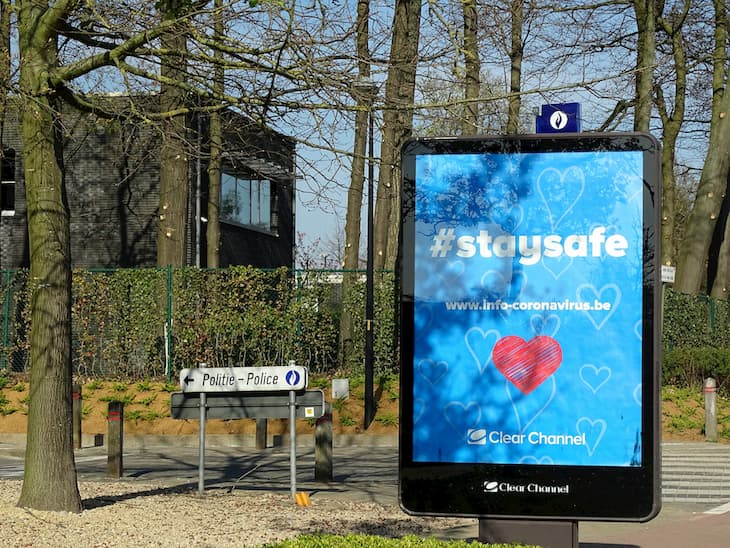
Coupling AI and digital signage for managing access control
The reopening of society comes as a relief to businesses who are now able to generate revenue again. But it’s also a lot of work as they have to make sure employees have masks, and they don’t have too many people in the store, and that customers follow social distancing, and so on.
Especially in places where a business may be subject to expensive fines for breaking protocol, access control is a huge pain point.
One simple but problematic way to handle that has been to place security personnel outside the store to count people manually. But besides possibly exposing them to the virus, it’s also a costly endeavor - personnel must be paid.
We’re seeing digital signage providers tackle this issue with solutions that:
- integrate precision AI systems for counting people
- Use infrared temperature sensors and advanced algorithms to measure heat signatures and detect abnormal temperatures
- Leverage biometric facial recognition to make sure people are wearing masks and keeping social distance
As we gain more freedom to move around, you’ll be encountering more screens letting you know when it’s safe for you to enter a building, informing you if you are violating safety protocol, and leading you around places like shops or hospitals so you can keep personal interaction to a minimum.
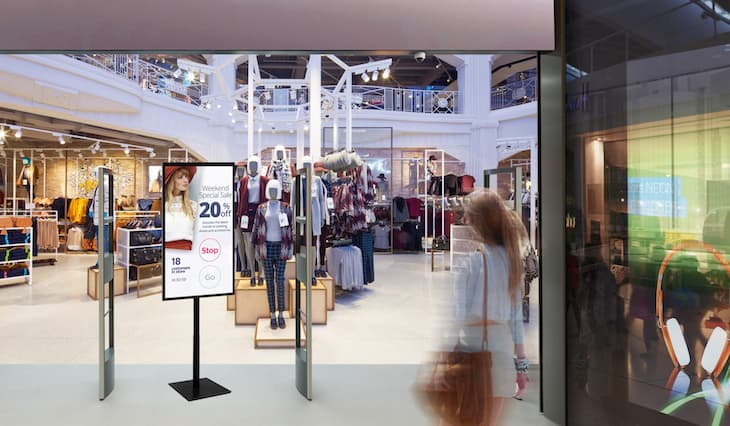
Digital signage as a trusted informer
Entrance control is just the first part of the conversation. One of the other operational challenges of running and patronizing a business in the age of COVID is staying on top of information that is constantly changing.
One of the biggest opportunities presenting itself for digital signage is to be that information source people can turn to. There is a heightened awareness and appetite right now for answers to questions like “Is this space being disinfected regularly?” “What are you doing to keep your customers safe?” “Do you have this or that in stock?” or “What are your hours like now?”
You’ll see stores that have taken a DIY approach to this with messy whiteboards, printed - or God forbid, handwritten - notices. And you’ll smack your head when that information turns out to be outdated or inaccurate.
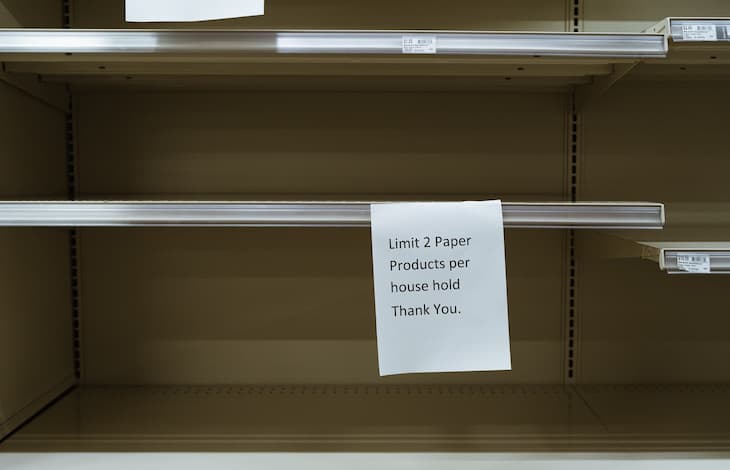
Digital signage not only is a much more professional way to present this information, it can also integrate with stock management systems to advertise the availability of products (I’m looking at you, toilet paper 👀) or enforce purchase limits on things like hand sanitizer and bottled water.
Window-facing digital signage saves time, effort, maybe even lives
Imagine donning your mask and making the trip out of your house to a store for a package of paper towels. You wait in a queue to be let in, walk to the appropriate aisle, only to find out there’s none left. You ask an understandably stressed store attendant when it might be restocked. They don’t know. You go to the next store. Repeat. Meanwhile, you don’t know what you may have exposed yourself (or others) to while making those unnecessary trips.
Now imagine you’ve donned your mask, ventured out, and arrived at the store, but seen a screen out front informing you that the store is out of paper towels, which will restocked at 8:00 AM tomorrow morning. You can go home without risking the trip inside, ready to go back now that you’ve been given the information you need. And not a soul had to be bothered.
Retailers are seeing and meeting the need for adequate window facing digital signage updated with real time info about stock shortages, capacity limits, and safety information.
Shifted emphasis from customer experience
In the Before Times retail digital signage was all about creating an inviting, personalized, entertaining customer experience. It was about increasing the time you spent in a store or a restaurant, or salon.
Now we have the polar opposite situation. We need to get people out of establishments quicker, decrease the time they spend inside so they have less of a chance to pick up or pass along an infection.
Retailers are having to press pause on experience until the world’s got a handle on this virus. When we either find the “new normal” living with long term restrictions or we beat the damn thing. In this regard, the role of digital signage is becoming more about supporting efficient operations.
That has repercussions for digital signage tech sellers too. Visual experience and wow factor will no longer be strong enough selling points. They’ll have to think about how their technology can solve problems and streamline operations.
Contactless as king - yes or no?
If we’re taking bets on what the Word or Phrase of 2020 will be, you can put my money on “social distancing” or speaking moistly.”
If we’re taking suggestions for what words should be voted out of the English language after this year, I submit “unprecedented” “new normal” and “trying times.”
If we’re prophesying about what word you’ll be hearing a lot more in the world of commerce, well - *Randy Jackson voice* - that’s gonna be a “contactless” from me, dawg.
Contactless has been around for a while. From entering public transit systems to paying with our smartphones, it was a part of our lives that we didn’t really think about. But with Covid on the scene, it’s become ubiquitous, adapting virtually every aspect of commerce - picking up groceries, ordering food, shipping packages, buying from stores.
One might ask, when it comes to digital signage, what will that mean? What about touch screen kiosks? What about touch-based wayfinding terminals and fast food menus? Is touch going to be another fatality of the coronavirus?
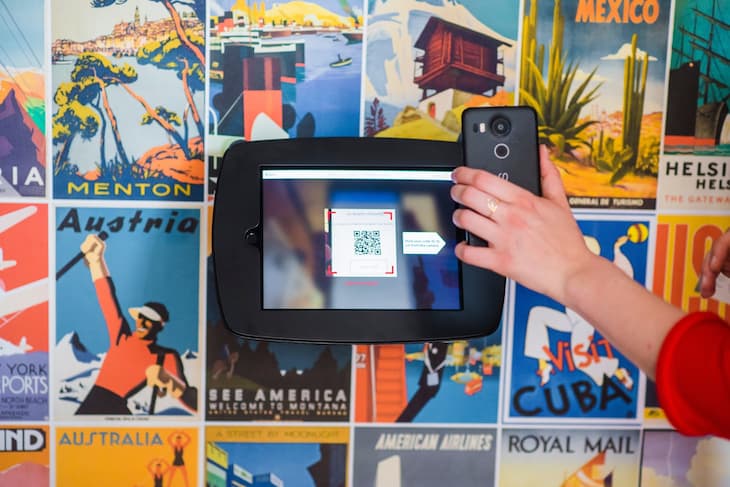
It’s probable that given people’s aversion to touch screen anything right now, the development of technologies like gesture and speech recognition, and smartphone remote control will be accelerated. But, touch isn’t going anywhere. At least not yet. For a couple of reasons:
- Touch screens are still the preferred method for communicating preferences. It’s fast, intuitive, and still a lot easier to control than person-to-person interaction. After all, you can always sanitize your hands after using a screen. And it runs no risk of coughing or sneezing on you.
- The alternatives just aren’t there yet. Speech recognition technologies can have limited vocabularies, be sensitive to ambient noise, or struggle to understand and parse accents. Gesture technologies have a small vocabulary too - one of very precise hand movements that often require a learning curve. And smartphone remote control raises a host of concerns about privacy and doesn’t account for those who don’t have that kind of technology in their pockets.
So, until a better alternative is fully developed and in high enough demand, there’s no reason to be pessimistic about the future of touch.
Shift toward digital consumer experiences
“Experience” is something that is always being redefined, and perhaps one of the positives to come out of all this sweeping change is that consumers are now becoming more comfortable with the digital experience. Think about how quickly we all had to enter the digital fray. Think about how Zoom took over the world in a matter of weeks, how we acclimated to working remotely with virtual tools. We did it because we had to, and now that the tech is out there - it won’t be going away.
COVID-19 and digital signage will play a key role in accelerating the effort to embrace the "new consumer" and develop ways to accommodate and encourage industries to revitalize the way they do their business.
Digital signage is trending upward
Looking back at January, it’s remarkable how ironically off, yet somehow still on-the-nose our 2020 predictions for the digital signage industry were. Little did we know how buzzwords like “contactless” would take on a life of their own in popular culture.
Little did we know just how and why AI and behavior analytics would gain the momentum for wide-scale adoption.
Little did we know just how badly we crave human interaction, and how deeply its absence could be felt in our daily lives. Little did we know how fast we could swoop in to replace it. Little did we know about anything, it seems.
Whether or not any of that was on your 2020 bingo card, it all demonstrates that right now, digital signage is more vital than ever before. And it will play an increasingly larger role in our return to work, to school, to travel, to life in the open.
Beyond that, we will see it tapped to change the consumer experience. In a situation with such deep and far-reaching impacts, it's likely that consumer behaviors will change over the long-term — well beyond the end of the pandemic.
Worry not - digital signage is still on trend.

